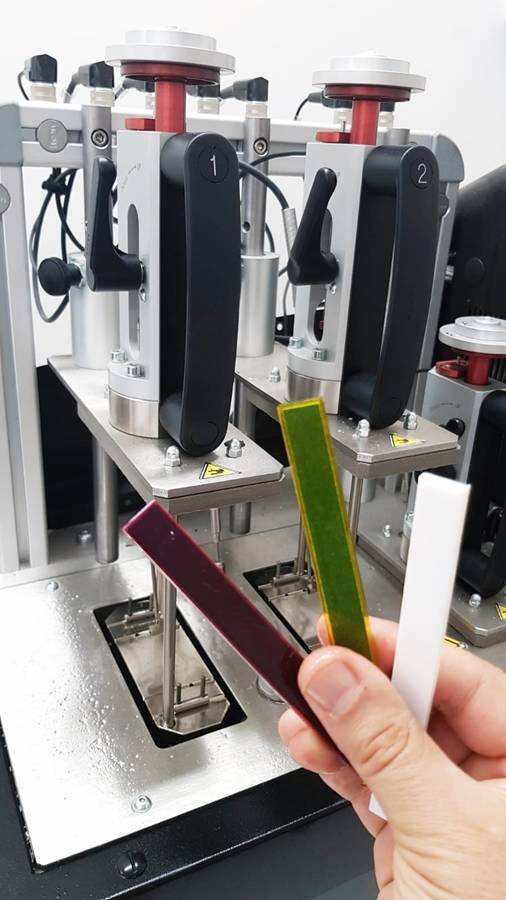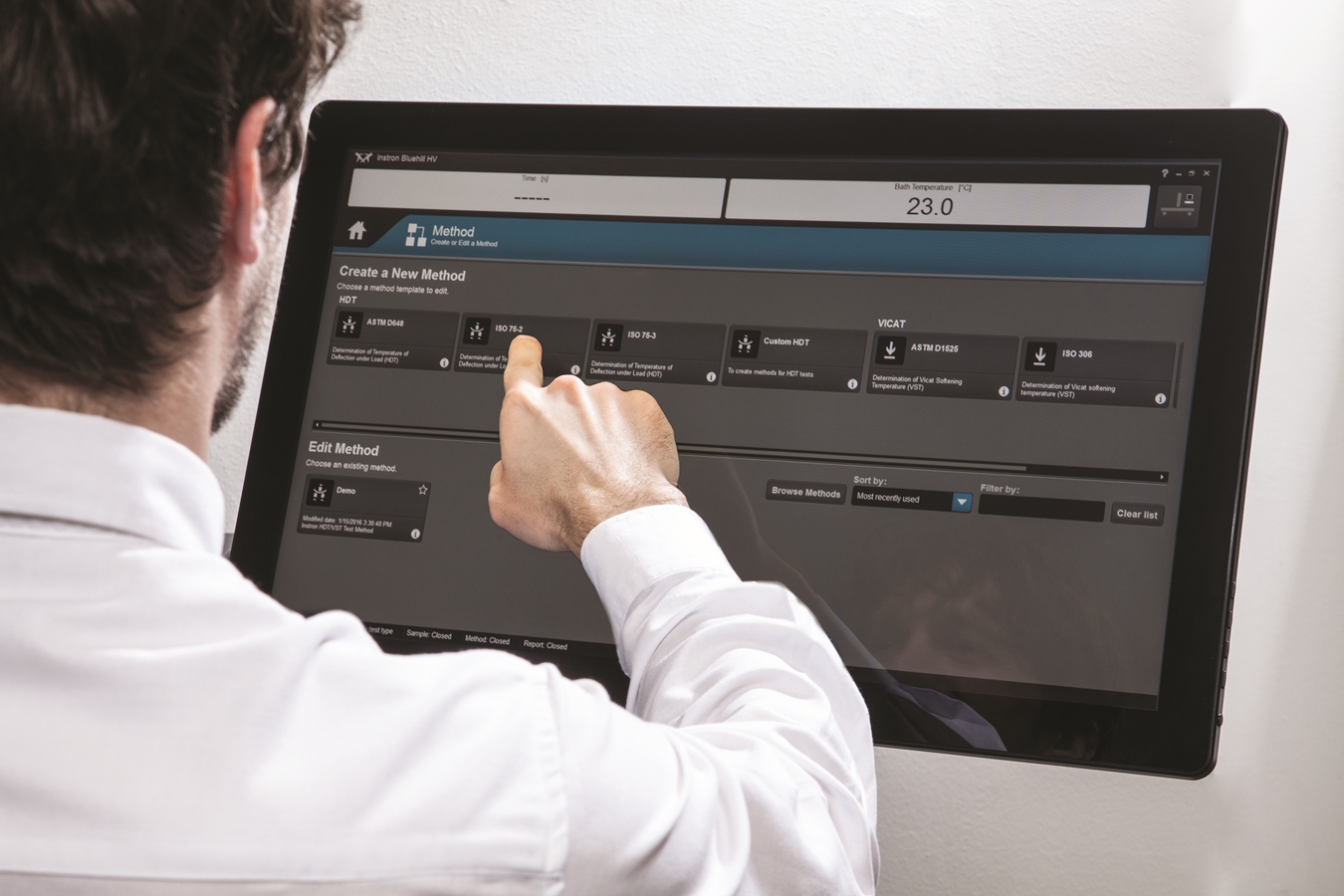Heat Deflection Temperature (HDT) tests play a vital role in 3D printing, especially in fused deposition modeling (FDM) and Polyjet applications. The HDT is one of the most crucial properties for polymer-based 3D printing materials as well as for 3D-printed prototypes and parts. Using reliable HDT testing machines is therefore essential. To achieve this important goal, a leading manufacturer of 3D printing technology, Stratasys turned to Instron HDT test equipment.
Stratasys is a global supplier of 3D printers and 3D printing materials. The company also operates printing centers in Europe, the USA, and Israel to manufacture bespoke 3D prototypes and parts for its customers. Constantly testing filaments and ink as well as 3D-printed parts for quality and performance is at the heart of Stratasys’ day-to-day research and development (R&D) activity.
Why is HDT testing important in 3D printing?
The HDT of a polymer or plastic material is the temperature at which the material starts to deform under a specified load. In rapid prototyping, models must at the very least have an HDT above the maximum atmospheric temperature of their location. This can easily exceed 40°C (104°F) in countries like Israel, where one of Stratasys’ main R&D laboratories is located. 3D printing materials and finished 3D-printed parts, whose typical applications include automotive and aerospace, must meet even more stringent HDT requirements.

Unreliable HDT testing machines can harm 3D printing
Every time an HDT testing machine goes offline, both the progress with materials research and production are affected. One of the main R&D laboratories at Stratasys currently deploys three HDT machines. If one goes down for a day, Stratasys loses one-third of its testing capacity.
Each machine performs on average three tests per day, which involves heating a bath of silicone oil while measuring the results. After completion, the oil must cool down again before the next test begins. It could take anything from one to four hours to get a result, depending on the temperatures involved. Therefore, it is not difficult to understand why machine availability is so critical. This is why Yaniv Hirschsohn, a senior researcher at Stratasys’ R&D laboratory in Israel, decided to turn to Instron’s latest HDT testing technology.
“The HDT testing machines I used in my previous role had several mechanical problems. Their reliability was low, and the end-user support was inadequate, leading to periods of unavailability,” Yaniv commented. “The software interface was also quite cumbersome to use. Anything the slows down or interferes with HDT reliability is a concern for 3D printing applications.”
Choose reliability when selecting HDT testing equipment
When Yaniv started looking for new HDT machines for the laboratory upgrade two years ago, reliability and ease of use were the most important considerations.
Yaniv’s history with Instron machines dates back to his university days where he used a tensile machine. It was an older model with a mechanical plotter, but, despite its age, it worked well and made an impression on Yaniv. This is corroborated by the fact that Stratasys still uses a 20-year-old Instron machine that continues to work reliably and produces accurate results. This personal experience combined with current research led Yaniv to purchase the latest Instron HDT machines.
How the latest HDT testing technology improves reliability
Stratasys was among the first 3D printing companies to purchase the latest generation of Instron machines. The HDT systems have met and exceeded Yaniv’s expectations in terms of reliability.
“These machines very rarely experience mechanical problems meaning the impact on the capacity of the laboratory is negligible,” Yaniv explained. “In addition, the service offered by Instron’s agents in Israel is very efficient. Answers to WhatsApp queries are quick, and support from technical experts in Italy is also readily available.”
The new Instron HDT Vicat machines also came with new software. The upgraded Bluehill applications are easy to use and provide a wide range of functionality. Yaniv describes the new software as a big step forward, which enhances ease of ease, minimizing downtime, and speeding up the testing process.

A smooth transition to new HDT testing equipment
One of the highlights of the project was the speed of commissioning. Changing machines can lead to teething problems that take a long time to resolve and interrupt workflow in the lab. These setbacks did not occur with the Instron machines. Minor commissioning issues were easily resolved on-site in Israel, and there was no interruption to work. The ease of transition was a great benefit to Stratasys in terms of continuity and shielded them from the costs associated with unplanned downtime.
Stratasys is continuously researching new products and materials for 3D printing. The company’s positive experience with Instron HDT systems in this project makes Instron an attractive partner for other testing instruments.
Instron has a comprehensive range of HDT and Vicat systems, including both oil-based and oil-free machines, capable of higher temperatures of up to 500°C (932°F).
HDT is one of the most common and most important properties for 3D materials. Instron has a track record of reliability and excellence in HDT measurement. It is this track record and excellent customer support that makes Instron a preferred supplier for HDT and Vicat systems.
Special Thanks to Dr. Yaniv Hirschsohn, Senior Chemistry Researcher- R&D Chemistry Group at Stratasys